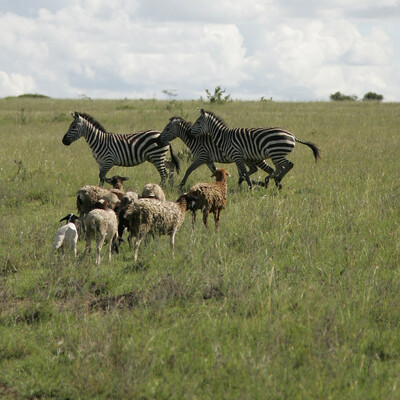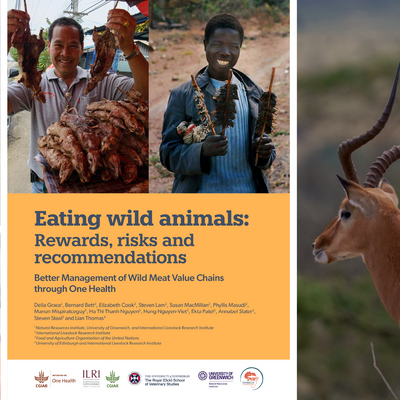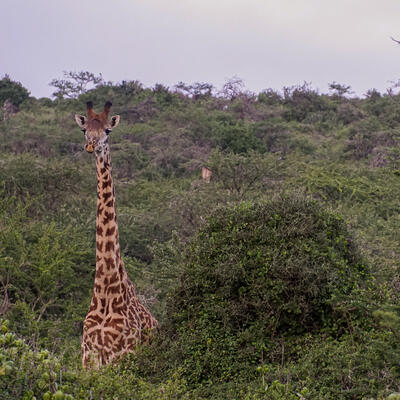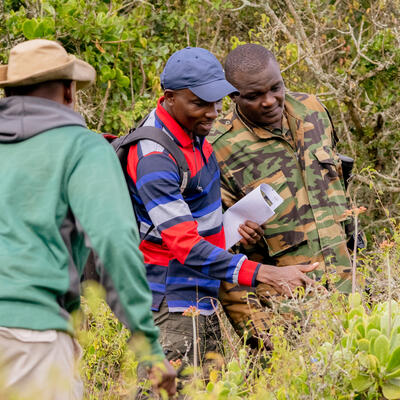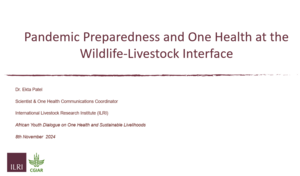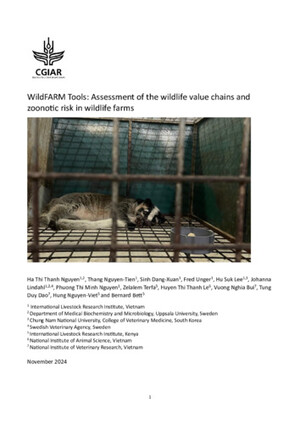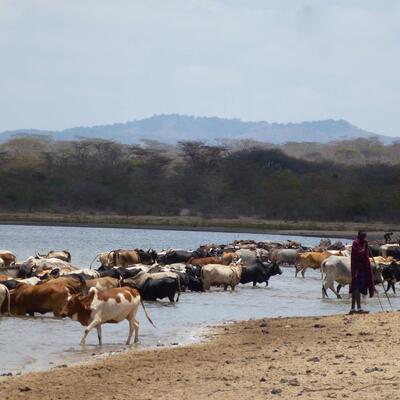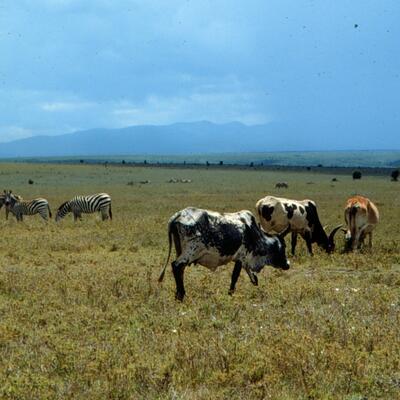
New study assesses disease risk perceptions of wild meat at the border of Kenya and Tanzania
NAIROBI, Kenya (12-04-2023) – That many pandemics, including possibly COVID-19, have had their origins in wild animals might be expected to cause meat consumers to reduce their consumption of risky ‘bushmeat’, which are derived from wild animals, to avoid illness. But a new study of bushmeat eaters at the Kenya-Tanzania border tells a different story.
While most people in these rural communities were aware of the dangers posed by bushmeat, they continued to consume it anyway. Some even increased their consumption due to the economic constraints imposed by COVID-19 measures.

The study explored the impact of COVID-19 patterns on wild meat consumption and perceptions of associated zoonotic disease risks. This is the first ever study to look at disease risks associated with wild meat value chains in rural settlements at the Kenya-Tanzania border.
It was undertaken by a team of researchers from the International Livestock Research Institute (ILRI), the Center for International Forestry Research and World Agroforestry (CIFOR-ICRAF), the global wildlife trade monitoring network TRAFFIC, Nature Heritage and the Wildlife Research Training Institute (WRTI).
‘Wildmeat trade and consumption in sub-Saharan Africa are both widespread and complex; we need to better understand the rural and urban demand for wild meat, particularly as the meat of some bird, rodent and other species is risky to consume’, says Ekta Patel, scientist and lead author of the paper.
The study, conducted in December 2021, interviewed 299 people in communities on the Kenya-Tanzania border. Key findings revealed that levels of education played a critical role in understanding zoonotic disease transmission. Respondents with higher levels of education were more aware of the risks of disease transmission. Nearly 80% of respondents learned about COVID-19 from mass media sources.
Despite understanding the associated risks of handling and consuming meat from wild animals, the study found that nearly 70% said that COVID-19 did not impact their levels of wild meat consumption, with some even reporting increased consumption. Researchers attribute this to the increased food costs caused by regulations to control the COVID-19 pandemic, which made many people seek protein sources cheaper than beef, mutton, chicken and other domesticated animal meats.
Dr. Patrick Omondi, Director and CEO of Wildlife Research Training Institute (WRTI) says, ‘Understanding the drivers of bushmeat activities is critical for many reasons, some of these include mitigating species decline, promoting conservation, human-wildlife co-existence and public health security’.
The study also examined local perceptions of risks associated with wild meat consumption, where respondents recognized the risk of other disease transmissions, including anthrax and brucellosis. The study’s respondents also recognized that high disease risk was associated with people with open wounds slaughtering wild animals and handling wild meat. Moreover, respondents identified meat from wild animals as more dangerous than meat from domesticated livestock, with hyena meat consumption cited as the riskiest. Ungulates were found to be the most consumed species, followed by birds, rodents and shrews.
‘While scientific evidence has shown that spotted hyenas are reservoirs of coronaviruses, we don’t know why these local communities thought hyenas to be risky edible species; more needs to be done to understand community perceptions about what is and isn’t a risky species to hunt and consume as well as address potential risks associated with consumption of birds and rodents’, says Patel.
Interestingly, community members differed in their responses. While more than 80% of the study’s respondents living in Kenya believed that wild meat should not be sold due to concerns for wildlife conservation, less than half the respondents in Tanzania felt the same, perhaps reflecting Kenya’s more stringent wildlife use regulations. Gender differences were also observed, with men more concerned than women about getting COVID-19 from live animals. It is, in fact, difficult to get COVID-19 directly from contact with animals, even from animals infected with the disease pathogens, since animals tend to suffer from species-specific mutations of the virus. But other zoonotic risks remain such as anthrax.
This study highlights the need to understand better how local communities perceive zoonotic and other disease risks associated with wild meat hunting, selling and consumption, especially in light of the COVID-19 pandemic. The findings can be used to inform public health strategies targeted at community inclusion and disease behavioral campaigns, particularly in lower-income countries where wild meat trade and consumption remain prevalent.
Safe as well as sustainable wild meat consumption can be advanced in several ways, such as:
- by providing communities with greater access to affordable meat from domesticated livestock
- by giving local communities incentives to change any risky behaviours that may lead to spillover of pathogens from animals to humans
- by supporting food sellers in the informal markets of the poor to adopt greater hygiene and related food safety standards
- by finding new ways to meet the nutritional needs of the poor, for whom wild meat remains an important source of proteins and micronutrients.
- by regulating wildlife hunting and sales of wild animals and their meat for conservation
‘This has been a great partnership where conservation groups, fellow CGIAR centers and national and international partners were able to come together to address a sensitive research topic to understand disease risks associated with bushmeat. I hope such partnerships continue to strengthen and allow for further investigations’, says Dieter Schillinger, ILRI’s Deputy Director General - Animal Human Health program.
Read more:
Original Publication: Assessing disease risk perceptions of wild meat in savanna borderland settlements in Kenya and Tanzania
ILRI's Report on Wildmeat Value Chains and Zoonotic Disease Risks






